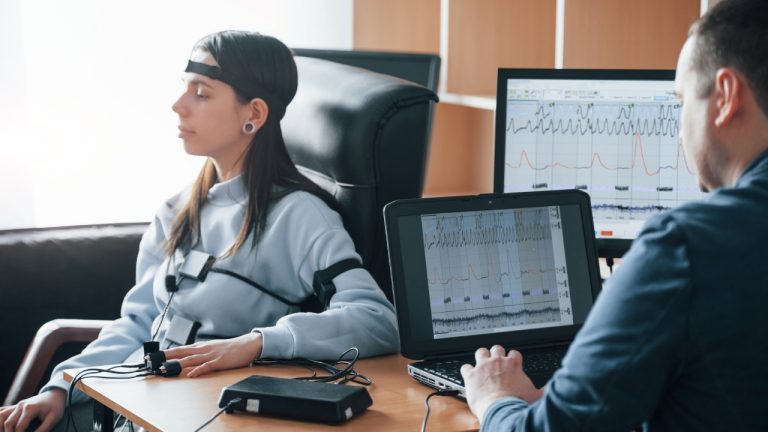Understanding Trauma and PTSD
To reclaim your life and peace, it is essential to understand the impact of trauma and Post-Traumatic Stress Disorder (PTSD) on individuals. PTSD is a mental health condition that can develop following exposure to traumatic events. Let’s explore the prevalence of PTSD and the symptoms associated with this disorder.
Prevalence of PTSD
PTSD is not uncommon, affecting about 6 out of every 100 individuals at some point in their lifetime. It is worth noting that women are more likely than men to develop this disorder. Certain factors, such as genetic predisposition and the nature of the traumatic experience, can increase a person’s vulnerability to developing PTSD.
Symptoms of PTSD
Symptoms of PTSD can manifest shortly after a traumatic event or may be delayed and appear months or even years later. The diagnostic criteria for PTSD include experiencing a traumatic event that involves actual or perceived threats of harm, and the symptoms must persist for more than a month, significantly impacting daily functioning.
The symptoms of PTSD are categorized into four main clusters:
- Intrusive Memories: Recurrent and distressing memories, flashbacks, or nightmares related to the traumatic event.
- Avoidance: Avoiding thoughts, feelings, places, or people that remind the individual of the traumatic event.
- Negative Changes in Thinking and Mood: Persistent negative beliefs, distorted thoughts, feelings of detachment, and reduced interest in activities once enjoyed.
- Changes in Physical and Emotional Reactions: Symptoms include irritability, angry outbursts, hypervigilance, exaggerated startle response, and difficulty concentrating.
If left untreated, PTSD symptoms can worsen over time and significantly impact various aspects of an individual’s life, including work, relationships, and overall quality of life. It is crucial to seek trauma counseling services to address PTSD symptoms effectively and begin the journey toward healing and recovery.
Treatment Approaches for PTSD
When it comes to addressing trauma disorder therapy to reclaim your life and peace, various treatment approaches are available to help individuals manage and overcome post-traumatic stress disorder (PTSD). Two key methods that have shown effectiveness in treating PTSD are medications and psychotherapy, along with the notable benefits of cognitive behavioral therapy (CBT).
Medications and Psychotherapy
Medications, such as selective serotonin reuptake inhibitors (SSRIs), in conjunction with psychotherapy, play a crucial role in managing PTSD symptoms such as sadness, worry, anger, and emotional numbness. An essential aspect of effective PTSD treatment is working closely with healthcare providers to develop a personalized treatment plan that may include the most suitable medication and dosage for each individual’s needs.
In the realm of psychotherapy, various types of talk therapies are available for both children and adults dealing with PTSD. These therapies encompass individual counseling, group therapy sessions, or a combination of both. The goal of therapy is to provide a safe space for individuals to process their traumatic experiences and develop coping strategies to navigate the challenges of living with PTSD.
Benefits of Cognitive Behavioral Therapy
Cognitive Behavioral Therapy (CBT) stands out as a highly effective therapeutic approach for individuals struggling with PTSD. CBT focuses on helping individuals recognize and reframe negative thought patterns and behaviors associated with their trauma. By challenging distressing thoughts and beliefs, individuals can develop healthier coping mechanisms and responses to triggers, ultimately reducing symptoms of PTSD.
In CBT sessions, individuals work collaboratively with therapists to identify and modify negative thought patterns, gradually exposing themselves to trauma-related triggers in a controlled environment. Through this process, individuals learn to reframe their perceptions of the traumatic event, build resilience, and regain a sense of control over their thoughts and emotions.
By incorporating cognitive restructuring, exposure techniques, and stress management strategies, CBT equips individuals with practical tools to navigate the emotional aftermath of trauma. The structured nature of CBT allows individuals to set specific goals, track progress, and develop sustainable coping skills for managing PTSD symptoms in various situations.
In conclusion, a combination of medications, psychotherapy, and specifically cognitive behavioral therapy can significantly aid individuals in their journey towards recovery from PTSD. These treatment approaches offer a holistic and personalized path to healing, empowering individuals to reclaim their lives and find peace amidst the challenges of trauma.
Trauma Therapy Techniques
In the realm of trauma therapy, the focus is on soothing the nervous system, integrating traumatic memories, and supporting mind-body healing. Traumatic experiences can leave a profound imprint on the body and mind, influencing mood, relationships, and self-perception. Effective treatments are available to aid individuals in healing from trauma (Source).
Mind-Body Healing
Mind-body healing is a fundamental aspect of trauma therapy, emphasizing the interconnectedness of psychological and physical well-being. Therapists assist individuals in integrating traumatic events, understanding them, and initiating the healing process. Through various techniques, the mind-body approach supports clients in managing and progressing on their healing journey effectively.
One of the key principles underlying mind-body healing is the recognition that traumatic experiences are stored not only in the mind but also in the body. By addressing both aspects simultaneously, individuals can achieve a more holistic healing process. Therapeutic practices such as yoga, meditation, and mindfulness can play a pivotal role in restoring the balance between the mind and body, promoting overall well-being and resilience.
Therapeutic Approaches
Therapists use a variety of techniques to guide clients in navigating and processing traumatic events. These approaches aim to assist individuals in comprehending, integrating, and eventually transcending their past experiences. While not all recommended therapies are evidence-based practices (EBPs), they all contribute to helping individuals develop a healthier emotional framework.
Several types of therapy have proven beneficial for individuals dealing with trauma, such as:
- Cognitive Processing Therapy
- Prolonged Exposure Therapy
- Trauma-Focused Cognitive Behavioral Therapy
- Trauma Systems Therapy
- EMDR Therapy
- Accelerated Resolution Therapy
- Hypnotherapy
- Somatic Therapies
- Art and Music Therapy
- Psychodynamic Therapy
- Inner Child Work
- Narrative Therapy
- Internal Family Systems Therapy
Each of these therapy types possesses unique strengths and focuses, contributing to the overall process of healing from trauma. By offering a diverse range of therapeutic options, individuals can explore and find the approach that resonates with their healing journey, ultimately promoting recovery and well-being.
Recognizing the impact trauma can have on mental health, seeking trauma therapy at the onset of symptoms can lead to a swifter healing process and multiple benefits, including the enhancement of mental health and overall well-being.
Types of Trauma Therapy
When it comes to addressing trauma and PTSD, various trauma therapy techniques are available to support individuals in their healing journey. Among these techniques, Cognitive Processing Therapy, Prolonged Exposure Therapy, and Art and Music Therapy have shown effectiveness in assisting individuals in managing and processing traumatic experiences.
Cognitive Processing Therapy
Cognitive Processing Therapy (CPT) is a structured form of therapy that aims to help individuals understand how trauma has affected their beliefs and emotions. By challenging and reframing negative thoughts related to the traumatic event, CPT assists individuals in developing a more balanced perspective and reducing distress.
CPT typically involves identifying and questioning unhelpful beliefs about the self and the world that may have resulted from the trauma. Through this process, individuals can gain a deeper understanding of their emotional responses and work towards creating a more adaptive and constructive mindset.
Prolonged Exposure Therapy
Prolonged Exposure Therapy (PE) is another evidence-based treatment for trauma-related disorders, particularly effective for individuals with PTSD. In PE, individuals gradually approach trauma-related memories and situations they have been avoiding, allowing them to process and integrate these experiences.
PE helps individuals confront and process their trauma by revisiting distressing memories in a safe and controlled environment. Through repeated exposure to these memories, individuals can reduce fear and avoidance behaviors, leading to a decrease in PTSD symptoms and an increase in emotional processing and resilience.
Art and Music Therapy
Art and Music Therapy are creative approaches that provide individuals with alternative methods of expressing and processing their emotions related to trauma. These therapies can be particularly beneficial for individuals who may find it challenging to articulate their feelings verbally.
In Art Therapy, individuals use various art forms, such as painting, drawing, or sculpting, to explore and communicate their emotions in a non-verbal manner. Similarly, Music Therapy involves engaging with music, either by listening or creating, to promote emotional exploration and healing. These creative therapies can help individuals access and release deeply held emotions, facilitating the healing process.
By incorporating a combination of evidence-based therapies like Cognitive Processing Therapy and Prolonged Exposure Therapy with creative approaches such as Art and Music Therapy, individuals can personalize their trauma treatment to suit their unique needs and preferences. These diverse therapy options aim to empower individuals in reclaiming their lives and finding peace amidst the challenges of trauma.
Impact of MDMA-Assisted Psychotherapy
Another individual’s experience with MDMA-assisted psychotherapy brought about profound transformations in her life. After participating in a study using this innovative therapeutic approach, she began to reconnect with her physical sensations, breaking free from a lifetime of numbness and dissociation as coping mechanisms. This newfound connection to her senses allowed her to experience simple joys like feeling the warmth of the sun or the gentle flow of a creek, cultivating a deep sense of gratitude for life itself (MAPS). The impact of this therapy sparked a daily experience of peace, love, and self-acceptance, underscoring the potential for personalized care for trauma recovery and emotional healing.
These personal accounts not only highlight the effectiveness of trauma disorder therapy but also emphasize the importance of personalized care, innovative treatments, and holistic approaches in the journey towards healing and reclaiming a life free from the shackles of trauma. Whether through traditional therapies or pioneering methodologies, each story of healing serves as a beacon of hope for individuals seeking mental health services for emotional well-being and stability (mental health services for emotional well being and stability).
Integrating Trauma Healing
In the journey of trauma counseling services, it is essential to focus on building resilience and continuing the healing journey to reclaim your life and peace. Trauma therapy equips individuals with healthy coping skills such as mindfulness practices, deep breathing exercises, self-soothing techniques, and building a strong support system to help manage stress and adversity. These tools enable individuals to navigate life’s challenges and build resilience.
Building Resilience
In the process of trauma recovery, building resilience is a key aspect. Through therapy, individuals explore how their past trauma has influenced their patterns of relating to others. They gain insight into their attachment styles and learn to challenge negative relational patterns. This journey leads to improved communication, increased trust, and enhanced intimacy in relationships.
Therapists play a crucial role in assisting clients to integrate traumatic events, understand them, and start the healing process. Different therapy techniques are employed to aid individuals in managing their progress effectively on the healing journey. While not all recommended therapies are evidence-based practices, they all help individuals think more effectively about their emotions.
Continuing the Healing Journey
Continuing the healing journey after trauma therapy is a deeply personal process. Personal stories often highlight the impact of integrative approaches like the one involving MDMA-assisted therapy. Through these sessions, individuals can explore and process traumatic memories that have been suppressed, enabling them to find peace within themselves and empower their inner healing journey (MAPS).
The post-therapy integration phase may be marked by emotional turbulence as individuals assimilate newfound insights, leading to shifts in perceptions. This period often involves waves of grief, anger, and fear as the individual strives to live authentically, ultimately transitioning from a view of the world as dangerous to one that recognizes safety and goodness in life.
By embracing the journey of building resilience and continuing the healing process post-therapy, individuals can reclaim their sense of self and find peace in the midst of past traumas. The path to healing is unique for each individual, but with perseverance and support, reclaiming one’s life and peace after trauma is indeed possible.







